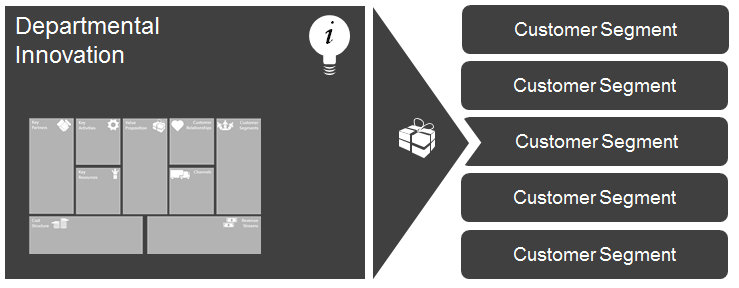Please see the attached point of view related to a very hot topic / challenge for most carriers today: how to generate sustainable revenue growth through new products. By tackling this problem holistically (new product ideas -> product configuration & sales launch -> product tracking & customer engagement) AND using the BMI toolkit for truly powerful implication analysis, any carrier will likely see tangible results.
Category Archives: Innovation Objectives
A New Business Model for First Responder Firefighters?
Having just gone through the ordeal of the Black Forest Fire, including being evacuated for 8 days without being allowed back to check on house or property, it made me wonder if even something as stalwart as our first responder firefighter business model could benefit from some BMI thinking.
To set the stage, let me first say how AMAZING these heroes are in what they do. They managed to save all the homes in our development, despite the 150 ft firestorm that came barreling towards / into our little bit of paradise. Take a look at what the crew faced below:
And here is a sampling of the aftermath:
So, clearly these guys faced the dragon and eventually beat it down. However, that does not mean there isn’t room for improvement. Furthermore, I wonder if these heroes ever get the chance to engage management consultants to take a fresh look at what they do, or more specifically, HOW they run their business / underlying business model. DISCLAIMER: we are not going anywhere near the actual fire fighting – these guys have that stuff nailed – but we want to take a look at the some of the stuff surrounding their heroic core.
In the coming weeks, we hope to debate this topic, put pen to paper, and hopefully even come up with something that could be considered useful. We will also pay very close attention to this business model problem from a not-for-profit perspective and how that manifests itself into business model design.
Departmental Innovation – Big Change, Tiny Footprint
One of the concerns we have heard time and time again when discussing innovation with established companies is the resistance to change from other areas of the business. Sure, the department or business unit would love to try something different, but they are convinced that doing anything too dramatic would inevitably be crushed by some other power in the same company.
This challenge is hardly anything new, and has been a major change management concern for decades. However, when it come to business model innovation, there is a clever way to contain the magnitude of outward-facing change, while at the same time allowing for substantial change “behind the curtain.”
Departmental innovation usually takes the following form:
- Provide something new (the “what” – usually a new offering or service)
- Deliver the offering or service in a new, innovative way (the “how” – ideally with an optimized business model)
It is critical to recognize that BOTH are equally important to ensure full value delivery to the customer / constituent group, and that both will likely need to evolve as validated learning happens. That said, of the two forms, the department has most control over its own business model, with limited external stakeholder interference. So how then can a department contain the amount of change associated with the offering itself?
Simply put, don’t try wide-scale rollout all at once. Instead, leverage the “wedge” principles – find a needy segment with truly underserved opportunity and one that would likely sing your praises should you succeed (see “The Wedge” post here for more details). Let a small success story be your momentum builder, while keeping the amount of stakeholder management very focused on just that initial segment… there is no need to convince everyone across the enterprise all at once that your new innovation is worthwhile. Then, let your first few successes be the mechanism through which you turn the tide of enterprise thinking.
Bottom line, departments within a large structure DO actually have the ability to innovate, and innovate substantially. But, do it smartly, where the biggest change happens behind the scenes. The “external” footprint starts small and only expands with success as its driver.
Look Forward and Then Act
I had breakfast yesterday with a longtime colleague who was in town visiting with clients. After 20+ years in senior executive roles with global 500 companies, she decamped to a mid-sized firm that was trying to get to the next level. Like many industries, this company has been reeling from disruption caused by the rise of digital technologies, and investors were expecting bold ideas. With a board meeting just around the corner, the CEO challenged my colleague to work with the leadership team figuring out how to position the business to become more like a technology-led company? Looking for guidance on how to proceed, my colleague asked, how do we do this? As we spoke further, several issues emerged:
- The company’s vision lacks a bold purpose
- Clarity what it takes to look, feel, and act like a technology company is limited
- An understanding of how its markets and customers are changing is not fully formed
- Open collaboration and communication are the exception rather than the rule
Without a clear template for the future state, addressing these issues would be a challenge. How could the organization make bets on its people, operations, and partners without first formulating its purpose and deciding what businesses it should enter? Like many companies, this organization seemed to attempting to optimize for the current rather than future business. Its strategic planning process further reinforced this thinking.
As we parted ways, I left my colleague with the following food for thought: set aside conventional wisdom about strategy formulation and take a hard look, instead, at who your future customers will be in the future and what they want. Customer-centric thinking will clarify the types of businesses the organization may wish to pursue. Apply this customer understanding to how the business could create and realize value from a new mix of offerings.







